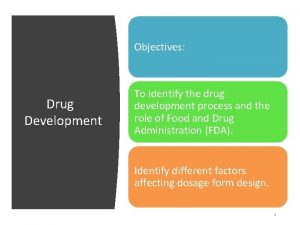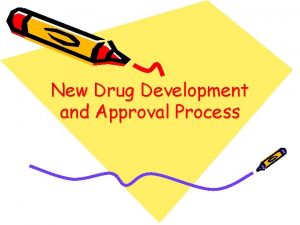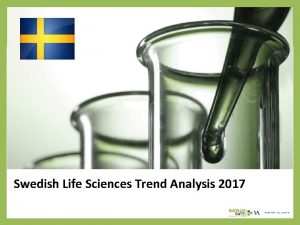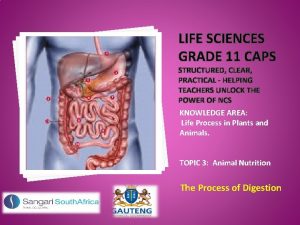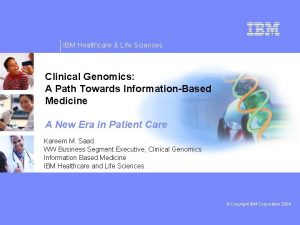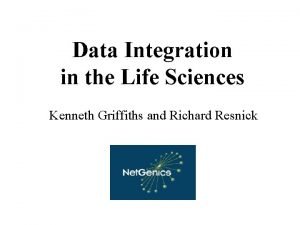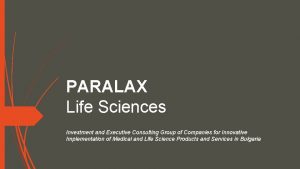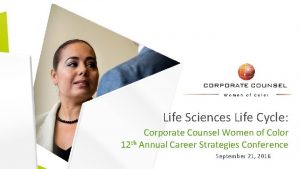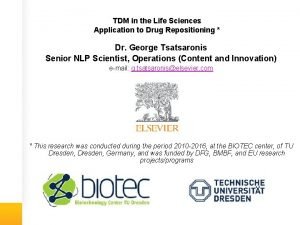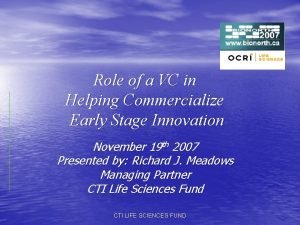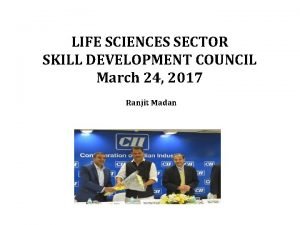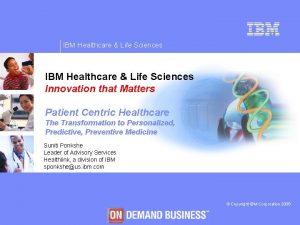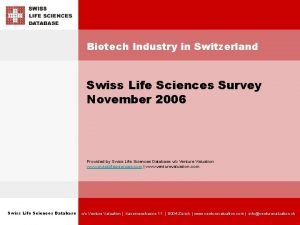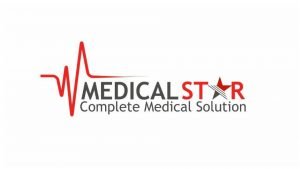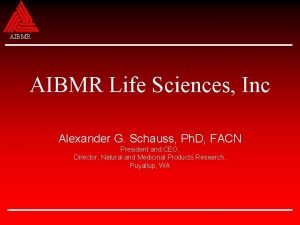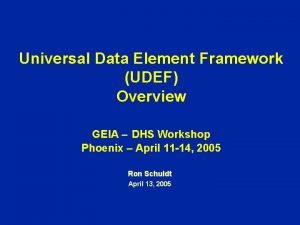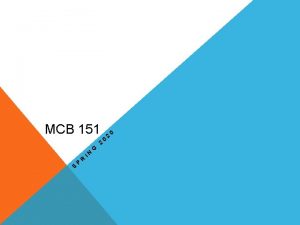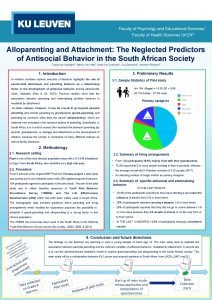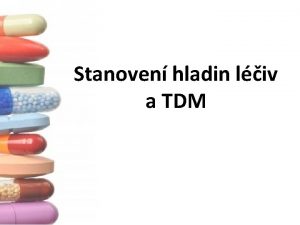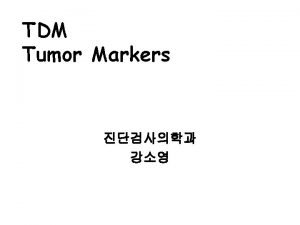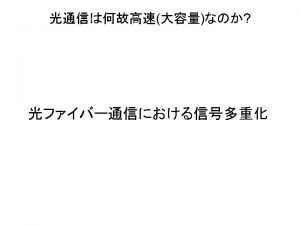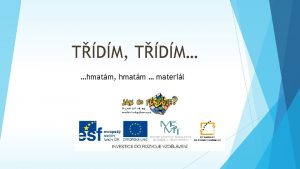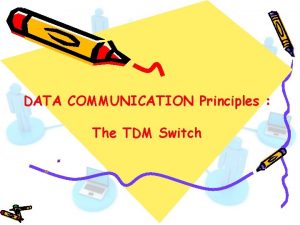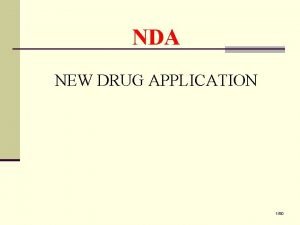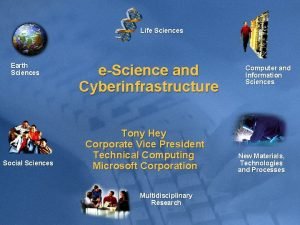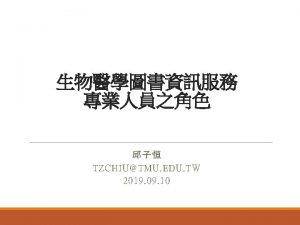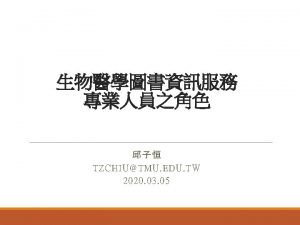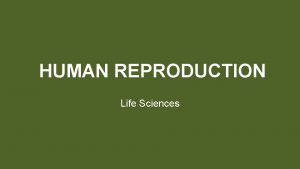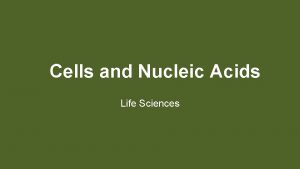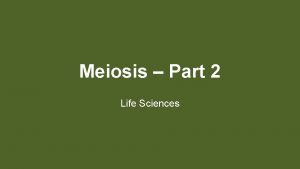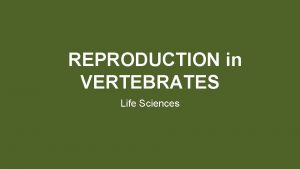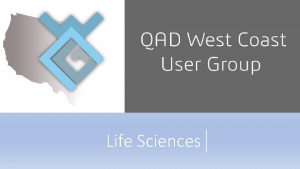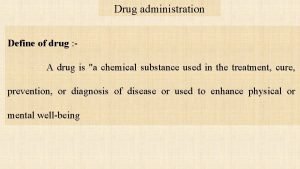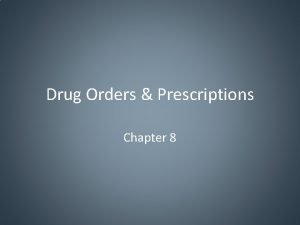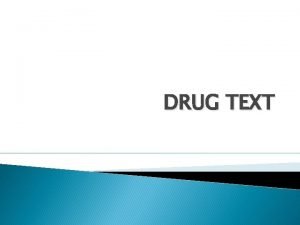TDM in the Life Sciences Application to Drug



















- Slides: 19

TDM in the Life Sciences Application to Drug Repositioning * Dr. George Tsatsaronis Senior NLP Scientist, Operations (Content and Innovation) e-mail: g. tsatsaronis@elsevier. com * This research was conducted during the period 2010 -2016, at the BIOTEC center, of TU Dresden, Germany, and was funded by DFG, BMBF, and EU research projects/programs

The Problem: Drug Repositioning Dove, Nature, 2003 Costs for one drug: $500 million - $2, 000 million [Adams and Brantner, 2006] 2 George Tsatsaronis, TDM in the Life Sciences, 16/11/2016, EC

The Potential: TDM in Life Sciences enables us to… ask a question: What is the biological role of expansins in fungi? and get back an answer automatically: Expansins are extracellular proteins that increase plant cell-wall extensibility. These wall-loosening proteins are involved in cell wall extension and polysacharide degradation. In fungi expansins and expansin-like proteins have been found to localize in the conidian cell wall and are probably involved in cell wall remodeling during germination. 3 George Tsatsaronis, TDM in the Life Sciences, 16/11/2016, EC

The Potential: TDM in Life Sciences enables us to… focus on some specific disease: Raynaud’s Syndrome and get an automatically generated hypothesis on treatment options: Fact 1: Tiejen 1975: “patients with Raynaud’s syndrome… increased blood viscosity” Fact 2: Woodcock 1984: “Beneficial effect of fish oil on blood viscosity” Hypothesis: Fact 1 + Fact 2: Fish oil as treatment of Raynaud’s syndrome 4 George Tsatsaronis, TDM in the Life Sciences, 16/11/2016, EC

The Potential: TDM in Life Sciences enables us to… focus on a scientific field: and get automatically a view on where is research going: 5 George Tsatsaronis, TDM in the Life Sciences, 16/11/2016, EC

The Current State Of the Art …these case studies can already be reproduced by existing text mining engines, e. g. , using text and data mining, natural language processing and semantic integration of resources. 6 George Tsatsaronis, TDM in the Life Sciences, 16/11/2016, EC

The Process: An Overview 7 George Tsatsaronis, TDM in the Life Sciences, 16/11/2016, EC

The Challenges: Scalability and Multilinguality Source: World Intellectual Property Report 2011, WIPO http: //www. wipo. int/edocs/pubdocs/en/intproper ty/944/wipo_pub_944_2011. pdf (pp. 52 -53) 8 George Tsatsaronis, TDM in the Life Sciences, 16/11/2016, EC

The Challenges: Heterogeneity and Integration of Resources During the 6 years of research in TU Dresden, we never had problems accessing the data; the main challenges have been how to integrate and combine all of this information, find the human expertise to guide the TDM feature engineering process, and create models with a biological basis/interpretation that is reasonable. 9 George Tsatsaronis, TDM in the Life Sciences, 16/11/2016, EC

The Algorithm Annotate all of the textual resources (e. g. , clinical trials, patents, database entries, ontology definitions, scientific abstracts, gene functions) with ontological concepts Unify/integrate the annotated information Focus on Drugs, Targets (Genes and their products), Diseases Use statistical measures such as PMI and chi-square to build entities’ profiles keeping the most important terms that describe each drug and each gene (alternatively, word vectors, deep learning, recurrent neural nets with skip-grams) Use measures of semantic relatedness to compute the pairwise similarity of drug and gene profiles Rank the most associated genes for each drug Verbalize the connections/relations Allow expert biologists/clinical doctors to review and reject obvious false positives Manually/Automatically collect supporting evidence for the remaining top-ranked pairs; Suggest Drug repositioning of that drug via this target (gene) for the indications participating in the profiles 10 George Tsatsaronis, TDM in the Life Sciences, 16/11/2016, EC

M. Kissa, G. Tsatsaronis, M. Schroeder. “Prediction of drug-gene associations via ontological profile similarity with application to drug repositioning”, Elsevier Methods, In Press, 2015 The Results 11 George Tsatsaronis, TDM in the Life Sciences, 16/11/2016, EC

M. Kissa, G. Tsatsaronis, M. Schroeder. “Prediction of drug-gene associations via ontological profile similarity with application to drug repositioning”, Elsevier Methods, In Press, 2015 The Potential 12 George Tsatsaronis, TDM in the Life Sciences, 16/11/2016, EC

The Main Bottleneck: Open Challenges Verbalizing datasets (assays, microarray experiments) and ontologies and integrate them Create models that produce results with biological interpretations 13 George Tsatsaronis, TDM in the Life Sciences, 16/11/2016, EC

The Main Bottleneck: Complexity 14 George Tsatsaronis, TDM in the Life Sciences, 16/11/2016, EC

Conclusions and Take Home Messages Semantic integration and data/text mining already provide helpful novel tools and services to researchers. We are experiencing the transition to the era of automated hypothesis generation and validation! Key challenges are: § § § 15 Integration of the heterogeneous data sources Interpretation of models and predictions Human expertise on how to link resources, and what features to use for the model learning George Tsatsaronis, TDM in the Life Sciences, 16/11/2016, EC

Thank you very much for your attention! Questions / Discussion 16 George Tsatsaronis, TDM in the Life Sciences, 16/11/2016, EC

Can we exploit all this information? The life circle of TDM Unstructured Text (implicit knowledge) Information Retrieval Information extraction Knowledge Discovery Semantic metadata Structured content Semantic Search/ Data Mining (explicit knowledge) 17 George Tsatsaronis, TDM in the Life Sciences, 03/11/2016, EC

M. Kissa, G. Tsatsaronis, M. Schroeder. “Prediction of drug-gene associations via ontological profile similarity with application to drug repositioning”, Elsevier Methods, In Press, 2015 Application: Drug Repositioning; evidence 18 George Tsatsaronis, TDM in the Life Sciences, 03/11/2016, EC

M. Kissa, G. Tsatsaronis, M. Schroeder. “Prediction of drug-gene associations via ontological profile similarity with application to drug repositioning”, Elsevier Methods, In Press, 2015 Application: Drug Repositioning; performance 19 George Tsatsaronis, TDM in the Life Sciences, 03/11/2016, EC
 Human science tok
Human science tok Deliberate adulteration definition
Deliberate adulteration definition Abbreviated new drug application
Abbreviated new drug application New drug development and approval process
New drug development and approval process Swedish life sciences
Swedish life sciences Life science grade 11 animal nutrition
Life science grade 11 animal nutrition Ibm healthcare and life sciences
Ibm healthcare and life sciences Data integration in the life sciences
Data integration in the life sciences Paralax life sciences
Paralax life sciences Colors life sciences
Colors life sciences Life sciences
Life sciences Cti life sciences fund
Cti life sciences fund Life sciences sector skill development council
Life sciences sector skill development council Ibm innovation that matters
Ibm innovation that matters Swiss life sciences
Swiss life sciences Meril life sciences
Meril life sciences Aibmr life sciences
Aibmr life sciences Life sciences universal data framework
Life sciences universal data framework Mcb 151
Mcb 151 School of life sciences ukzn
School of life sciences ukzn


